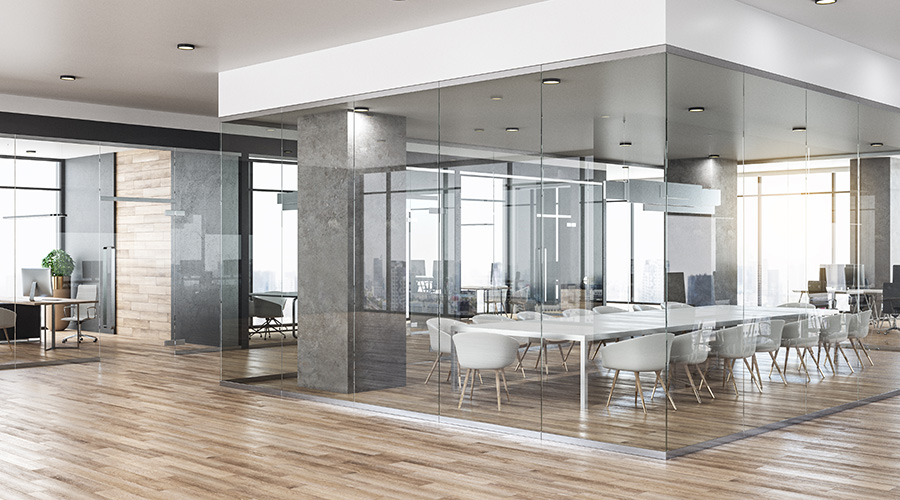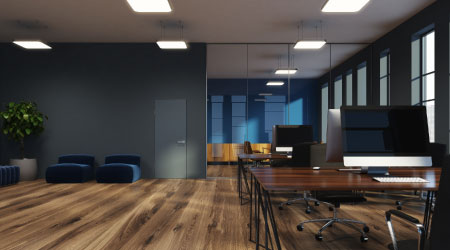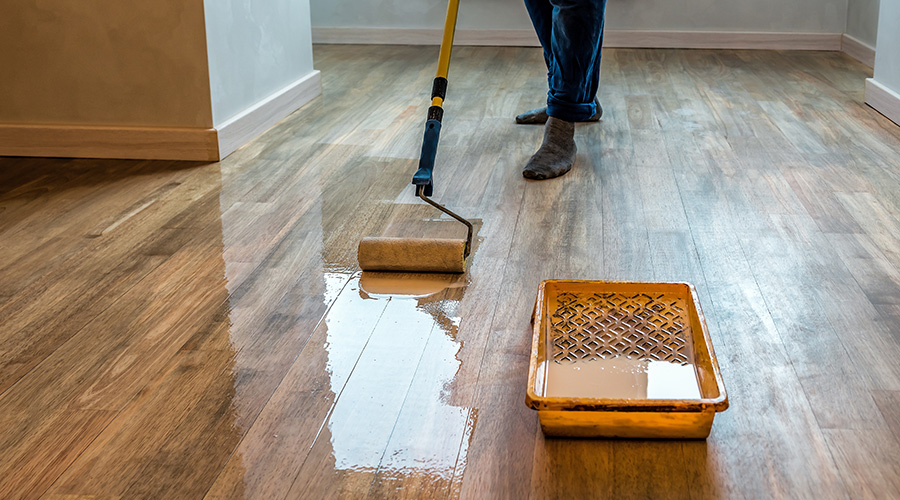Floor Care: Protecting the Investment
By rethinking equipment, chemicals, technology and procedures, managers can improve the appearance and performance of flooring
Floors are a reflection of style and taste — the initial impression created when a person enters a facility — and they make a truly a lasting impression. Organizations invest a considerable amount of time and money in choosing the right flooring for a facility, based on function and aesthetics.
To protect this investment, housekeeping managers need to maintain the appearance and extend the life of the flooring. Proper floor care starts with architects and the interior designers specifying the correct flooring material for its application. Beyond installation, it is up to managers to make sure in-house staff or contracted services maintains the floor in a proper and efficient manner.
Unfortunately, in too many cases, architects specify flooring more for aesthetics and less for functionality, and managers make the mistake of assuming in-house staff or contracted services already know the best equipment, chemicals, schedules and tasks to keep floors looking their best. Unfortunately, this too often is not the case.
Two Steps Forward
Proper floor care and maintenance consists of two equally important steps. The first step is to identify the various flooring materials that are commonly used in facilities, whether it soft flooring — such as carpet — or hard flooring. Hard-flooring material generally falls into six categories:
• Resilient, including vinyl composition tile, sheet vinyl, rubber, cork, and solid luxury vinyl
• Stone, including marble, granite, slate, travertine, limestone, agglomerate, and terrazzo
• Wood, including various types of solid, laminated, and engineered material
• Clay and masonry, including saltillo, ceramic, porcelain, brick, quarry, and terra cotta
• Concrete, which includes polished, coated, acid stained, dyed, overlay, integrally colored, and dry shake
• Specialty, including bamboo and cork.
The second step is developing a program to best care for flooring materials efficiently while also keeping labor and supply costs as low as possible. Floor care of any flooring must take into consideration the following conditions:
• Traffic. How many people are walking across the floor, and what is being rolled or dragged across the floor?
• Environment. What type of soil is being left on the floor?
• Congestion. What physical obstacles might hinder floor care procedures?
• Time. When can floor care tasks be performed?
• Size. What is the square footage of the area to be maintained?
With this information, a manager can develop and implement a comprehensive program to insure floors consistently look their best.
Equipment Issues
Technology has changed over the last seven or so years in terms of floor-care chemicals, supplies and equipment. Given these major changes, managers should not assume that a provider of floor-care products with 20 years of experience necessarily understands the best ways to maintain floors, especially considering some of the new materials that have entered the market.
Putting a floor finish on everything is not the answer. In fact, it would make sense for the managers to provide written specifications on procedures, chemicals, supplies and equipment to be used, based on current technology, to reduce costs and keep floors looking their best. Given its big-ticket nature, managers would do well to give floor-care equipment extra attention.
Facing Challenges
Managers face three major challenges when developing a program to properly care for flooring.
Before addressing these challenges, though, managers have one hurdle to clear: changing the way that people involved in floor care view the process. To change this mind set, managers need to educate themselves about trends and encourage in-house housekeeping staff or contracted services to change the way they perform floor care.
Why? It is amazing how many floor care professionals have never used microfiber mops for dry/wet mopping or floor-finish application, or have no idea what a planetary head machine is. It’s also amazing that, even though manufacturers of floor-care equipment and supplies have improved their products, the typical floor-care technician still performs floor care using equipment and supplies that are outdated, when compared to alternatives available on the market today.
The first challenge is to address the failure of architects to fully understanding the real-world maintenance requirements of various flooring materials. Often, the results of architects’s efforts create increased maintenance requirements under a budget that does not allow for it, and technicians are asked to properly care for a floor under unrealistically tight time constraints. As a result, true craftsmanship in floor care never takes place. Only the minimum maintenance takes place, and as time passes, the floors’ appearance slowly degrades to the point that it requires complete restoration.
The second challenge is the result of the shrinking floor care budgets. More than ever, housekeeping departments are forced to do the same amount, if not more work, with less money and provide the same, if not better, results.
The third challenge involves improper floor-care procedures that are performed by in-house employees or employees of contracted services. Too often, they are using procedures they used 20 years ago and never bothered to update.
Steps to Success
What steps can a manager take to correct these situations?
For the first and second challenges, the answer is to incorporate recent advances in floor-care equipment into the program. All of the equipment that has come to the market in recent years allows workers to maintain more square feet in a shorter amount of time and to do so more thoroughly.
For the third challenge, the solution is to provide written specifications of floor care procedures to be performed, as well as the training for in-house employees or contracted services to support these procedures. Ultimately, it will be up to managers to enforce these changes.
Selecting the procedures for maintaining various flooring materials depends on many variables, too many to address in one article.
One fact that workers must remember, however, is that it is not always the actual floor material being maintained. Often, the topical coating that has been put on top of the flooring material receives the care and maintenance.
The decision on equipment use will depend on the size of the area to be maintained and the type of flooring. Any size area, whether it has hard or soft flooring, will benefit from the use of backpack vacuum cleaners. Also, hard-surface floors will benefit from the use of microfiber mops to remove wet or dry soil. If a floor- finish application is involved, microfiber finish applications systems work well. When maintaining soft surfaces, any size area will benefit from the use of oscillating carpet-care equipment and downward-flow carpet fans.
Workers can continue to use standard, corded electric floor-care equipment, including a rotary floor machine, a wet vacuum, and a high-speed burnisher, in areas smaller than 1,500 square feet. In areas larger than 1,500 square feet, managers should consider specifying the use of higher-production equipment, such as autoscrubbers, battery or propane burnishers, propane finish strippers, battery sweepers, and planetary movement carpet care equipment.
Finally, managers should consider specialty equipment specific to flooring materials, such as planetary-movement stone care and restoration equipment and high-pressure tile and grout-cleaning equipment.
Jim Cuviello operates Complete Floor Care Solutions, www.floor-care.com, and Complete Decorative Concrete Solutions, www.concrete-medic.com. He has been in the floor-care maintenance industry for 10 years in the Baltimore/Washington area as a sales representative of janitorial supplies and as a floor care contractor. He can reached by phone at (410) 626-7471 or at jim@floor-care.com.
Building a Floor-Care Arsenal
Housekeeping managers trying to ensure that cleaning crews have the proper equipment should consider these recommendations:
Hard floors
• backpack vacuum cleaners
• microfiber mopping systems, both wet and dry
• microfiber finish application systems
• ride-on sweepers
• walk-behind sweepers
• ride-on scrubbers, both cylindrical and oscillating
• walk-behind scrubbers, both cylindrical and oscillating
• high-pressure tile and grout cleaning equipment
• propane burnishers
• battery-powered burnishers
• propane floor-finish strippers
• planetary-movement stone care and restoration equipment.
Soft floors
• backpack vacuum cleaners
• ride-on sweepers
• oscillating carpet cleaners
• planetary-movement carpet care equipment
• downward-flow carpet fans.
— Jim Cuviello
|
Related Topics:











